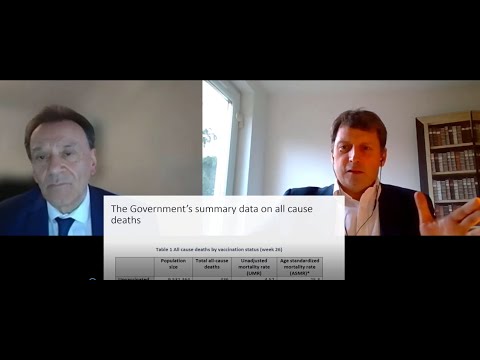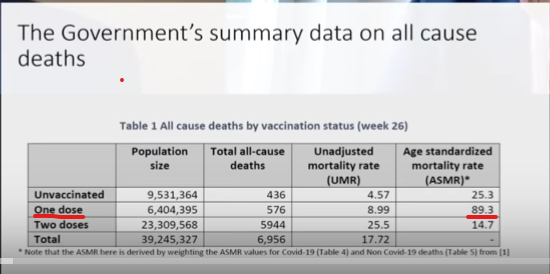I’ve done a longer write up at the Participator, here’s the expanded version:
Professor Norman Fenton is a mathematician, he is currently Professor of Risk Information Management at Queen Mary University of London. He appeared in an interview that was posted this week on a Youtube channel called Thinking Slow. During the interview (40 minutes long), he says that there are a significant number of deaths coming between the first jab and 14 days immediately after the SECOND jab, this time window is very significant because the jabs are not considered to start being effective until after this period; and so he says that in official statistics people who die in this window are sometimes counted as UNvaccinated deaths. Quote (@6:33):
some agencies actually count a person as un-vaccinated if they die within 14 days of the second dose, or after just one dose, … in the context of death attribution this doesn’t make sense at all.
In my mind this is very alarming because it opens the possibility I think that mortality data that could reveal the scale of potentially lethal side effects of the jabs is being suppressed. This is the most compelling evidence I have seen so far in fact of the dangers from the jabs. He continues (@8:53):
the age standardised mortality rate of the one dose, the partially vaccinated, is ten times higher than the equivalent of the unadjusted rate for that group.
The table shown on the screen at this point also shows that the age standardised mortality rate for the one dose jabbed is 3.5 times higher than for the (actually) unvaccinated. He points out some pecularities in the data, but concludes from his analysis that: (@10:00):
if these data are correct, this age standardised mortality calculations are correct, then it seems that the first dose in relative terms is really deadly , while the second dose is some kind of miracle treatment.
The interviewer offers a possible explanation for this, which in my own interpretation seems to amount to the suggestion that those who are most susceptible to the side effects of the jabs are being killed by the first jab and, thanks to the way the data is being presented in the official statistics, this is creating the false impression that the second jabs are having a beneficial effect in reducing mortality because those most likely to die from the side effects of the first dose are probably the most vulnerable people in general. The official presentation is also creating the damaging impression that there are many more deaths among those who have not been jabbed at all than is actually the case, an impression which is being used in propaganda against the unvaccinated.


